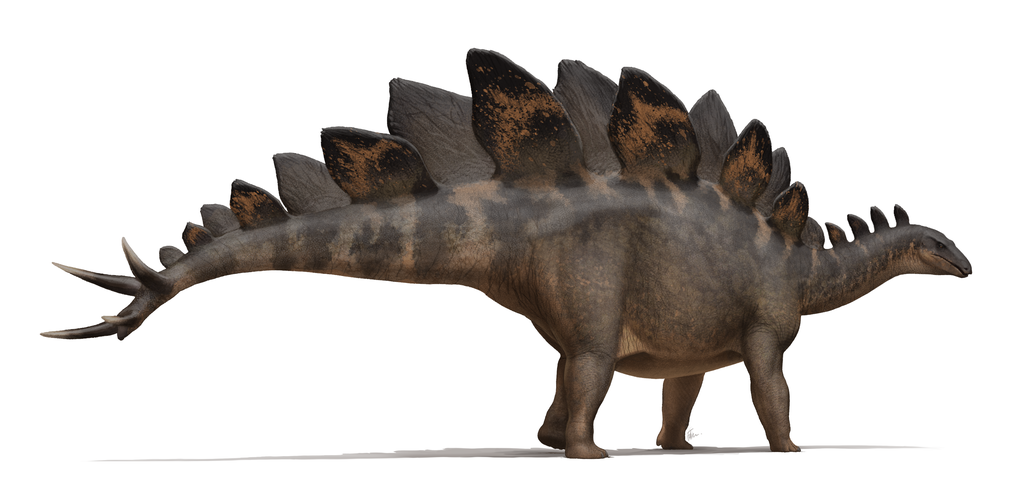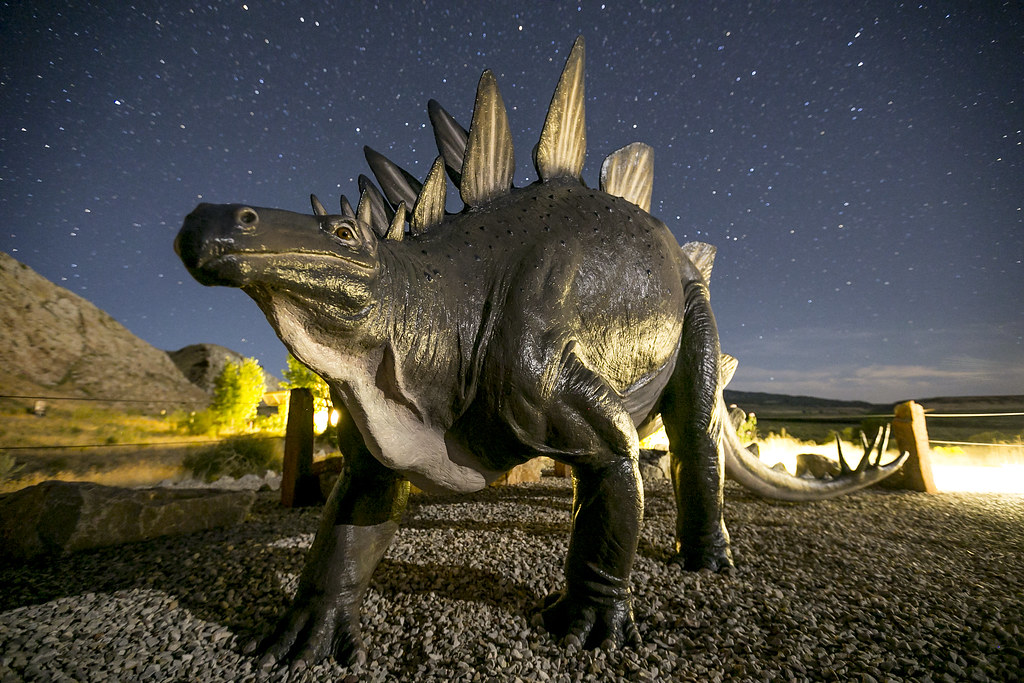The iconic spiky silhouette of Stegosaurus has captivated scientists and dinosaur enthusiasts for over a century, but one question continues to spark heated debates in paleontology circles: what were those magnificent plates really for? Picture this massive herbivore, roughly the size of a school bus, wandering through the lush Jurassic forests with two distinctive rows of diamond-shaped plates rising from its back like ancient solar panels. These remarkable structures, some reaching nearly three feet in height, have puzzled researchers since the first Stegosaurus fossil was discovered in 1877. The debate isn’t just academic curiosity—it’s a window into understanding how these magnificent creatures survived and thrived in their prehistoric world.
The Discovery That Started It All

When paleontologist Othniel Charles Marsh first laid eyes on Stegosaurus fossils in the late 1800s, he faced a puzzle that would define dinosaur research for generations. The scattered plates found near the skeleton posed an immediate challenge: how exactly were they arranged on the living animal? Marsh’s initial reconstruction showed the plates lying flat against the back like armor plating, which seemed logical for protection.
However, this interpretation quickly proved problematic as more complete specimens were unearthed. The plates were too thin and fragile to serve as effective armor, and their positioning suggested they stood upright rather than lying flat. This realization launched what would become paleontology’s longest-running mystery, with each discovery adding both clues and complications to the puzzle.
The Anatomy of a Mystery

Stegosaurus plates weren’t just simple bone structures—they were complex, living tissues filled with blood vessels and covered in skin. Modern CT scans reveal an intricate network of grooves and channels that once housed blood vessels, creating a vascular highway throughout each plate. Think of them like the radiator in your car, designed to maximize surface area for heat exchange.
The plates varied dramatically in size and shape depending on their position along the spine, with the largest specimens found over the hips and smaller ones toward the neck and tail. This size variation provides crucial clues about their function, as both display and thermoregulation theories must explain why evolution would favor such a gradient. The bone structure itself shows rapid growth patterns, suggesting these weren’t just passive ornaments but active, metabolically important organs.
The Thermoregulation Theory Takes Center Stage
The idea that Stegosaurus plates functioned as biological air conditioners gained serious traction in the 1970s when scientists began studying their blood vessel patterns. Researchers discovered that the plates contained an extensive network of blood vessels, similar to what we see in modern animals that rely on vascular heat exchange. Elephants use their ears in much the same way, pumping blood through thin tissues to release excess heat.
Computer models from the 1980s suggested that by adjusting blood flow and positioning their bodies relative to the sun and wind, Stegosaurus could regulate their body temperature with remarkable precision. This theory painted a picture of these dinosaurs as sophisticated thermal managers, capable of maintaining optimal body temperatures in varying environmental conditions. The implications were profound: if true, it meant Stegosaurus possessed a level of physiological sophistication that challenged assumptions about dinosaur biology.
Sexual Display: The Peacock Connection
The sexual display hypothesis emerged from observations of modern animals, where elaborate structures often serve to attract mates or intimidate rivals. Consider the peacock’s tail—utterly impractical for survival but essential for reproduction. Scientists began wondering if Stegosaurus plates might have served a similar purpose, perhaps changing color or reflecting light to communicate with other members of their species.
This theory gains support from the asymmetrical arrangement of plates, which creates a more visually striking profile when viewed from the side. The size variation along the spine could have created dramatic silhouettes, making individual Stegosaurus appear larger and more impressive to potential mates or competitors. Some researchers have even suggested that the plates might have been covered in colorful skin, similar to modern birds, creating stunning visual displays that we can barely imagine today.
The Blood Flow Evidence

Modern forensic techniques have revealed fascinating details about how blood once flowed through Stegosaurus plates. Microscopic analysis shows that the vascular channels were arranged in patterns optimized for heat transfer, with smaller vessels branching off from larger ones like tributaries from a river. This organization is remarkably similar to what we see in modern thermoregulatory organs.
The positioning of major blood vessels also supports the temperature control theory. Large vessels entered the base of each plate and then branched extensively throughout the structure, creating maximum surface area for heat exchange. Computer simulations suggest that by controlling blood flow to these vessels, Stegosaurus could have increased or decreased heat loss by up to 30%, providing fine-tuned temperature control that would have been crucial for survival in variable climates.
Computational Models and Wind Tunnel Tests

Scientists have gone to extraordinary lengths to test the thermoregulation theory, even building scaled models and testing them in wind tunnels. These experiments revealed that the plates’ diamond shape and alternating arrangement created optimal conditions for heat dissipation. As air flowed over the plates, it created convection currents that would have enhanced cooling, much like the fins on a motorcycle engine.
The models also showed that plate orientation mattered enormously. When positioned perpendicular to air flow, the plates created a maximum cooling effect, while parallel positioning minimized heat loss. This suggests that living Stegosaurus might have been able to behaviorally thermoregulate by changing their body position relative to wind direction, adding another layer of sophistication to their temperature control system.
The Case for Multi-Purpose Plates

Modern paleontology increasingly favors the idea that Stegosaurus plates served multiple functions simultaneously. After all, evolution rarely creates single-purpose structures when multi-functional ones provide greater survival advantages. The plates’ rich blood supply could have supported both thermoregulation and display functions, changing color through blood vessel dilation while simultaneously managing body temperature.
This dual-purpose theory explains why the plates were so large and prominent—they needed to be visible for display purposes while also providing sufficient surface area for effective heat exchange. The alternating arrangement maximizes both visual impact and thermal efficiency, creating a perfect evolutionary compromise between form and function. It’s similar to how a sports car’s design serves both aesthetic appeal and aerodynamic performance.
Compared to Modern Animals
Nature provides numerous examples of structures that serve both thermoregulation and display functions. The fennec fox’s oversized ears help dissipate heat in desert environments while also playing a role in social communication. Similarly, the toucan’s enormous beak functions as both a cooling system and a visual signal to other toucans.
The cape buffalo’s horns and the moose’s antlers also demonstrate how evolution can craft structures that serve multiple purposes. These examples suggest that Stegosaurus plates fitting into multiple functional categories wouldn’t be unusual; it would be typical of how evolution maximizes efficiency. The question isn’t whether the plates served one function or another, but rather how they balanced multiple roles to enhance survival and reproduction.
Chemical Analysis Reveals New Clues

Recent chemical analysis of Stegosaurus plate fossils has provided new insights into their original structure and function. Isotope analysis suggests that the plates were highly vascularized and metabolically active, supporting the thermoregulation theory. The bone chemistry also indicates rapid growth, meaning these structures were energetically expensive to maintain.
Trace element analysis has revealed that the plates contained higher concentrations of certain minerals associated with blood vessel development, further supporting the vascular heat exchange hypothesis. However, the same analysis has found evidence of proteins typically associated with display structures in modern animals, keeping the debate alive. These chemical signatures provide a molecular-level view of how these structures functioned, adding scientific rigor to what was once purely speculative.
The Arrangement Controversy

Even the basic question of how Stegosaurus plates were arranged continues to generate debate. The traditional view shows them in two parallel rows, but some researchers argue for a single row down the center of the back. Others suggest the arrangement might have varied between species or even changed as individuals matured from juveniles to adults.
The alternating pattern favored by most paleontologists creates an aesthetically pleasing profile while maximizing heat exchange surface area. However, recent computer modeling suggests that a single central row might have been more effective for thermoregulation, creating a continuous “fin” along the spine. This ongoing uncertainty highlights how much we still don’t know about these fascinating structures and the animals that bore them.
Juvenile vs Adult Plate Function

The function of Stegosaurus plates might have changed dramatically as these dinosaurs grew from hatchlings to adults. Juvenile plates were proportionally smaller and might have served primarily for thermoregulation, helping young dinosaurs maintain body temperature more effectively than adults. As the animals matured, the plates’ role in sexual display and species recognition likely became more important.
This ontogenetic shift in function explains why adult plates were so much larger and more elaborate than strictly necessary for temperature control. Sexual selection pressures would have favored individuals with the most impressive displays, leading to the evolution of increasingly elaborate plate structures. The energy cost of maintaining such large plates would have been justified by reproductive success, even if it meant less efficient thermoregulation.
Environmental Context and Climate Considerations

The Late Jurassic environment in which Stegosaurus lived provides crucial context for understanding plate function. This period was characterized by warm, humid conditions with seasonal temperature variations that would have challenged large herbivores’ ability to maintain optimal body temperatures. The lush vegetation and abundant plant food sources meant that energy was available to support metabolically expensive structures like elaborate plates.
However, the climate wasn’t uniformly warm—fossil evidence suggests significant temperature swings between day and night, as well as seasonal variations. These conditions would have favored animals with sophisticated thermoregulatory abilities, supporting the temperature control hypothesis. The presence of other heavily armored dinosaurs in the same environment suggests that display and defensive functions were also important, creating evolutionary pressure for multi-functional structures.
Modern Technology Meets Ancient Mystery
Today’s advanced imaging techniques and computer modeling capabilities have revolutionized our understanding of Stegosaurus plates. High-resolution CT scans reveal internal structures invisible to previous generations of paleontologists, while 3D modeling allows scientists to test hypotheses about function and performance. These tools have confirmed the plates’ complex vascular architecture while also revealing new details about their construction and growth patterns.
Virtual reality reconstructions now allow researchers to “walk” among living Stegosaurus, observing how the plates might have functioned in their natural environment. These simulations can test different scenarios—from thermoregulation to display behavior—providing insights impossible to obtain from fossils alone. The combination of ancient bones and cutting-edge technology continues to push the boundaries of what we can learn about these remarkable creatures.
The Continuing Quest for Answers

Despite more than a century of study, the Stegosaurus plate debate remains far from settled. Each discovery adds pieces to the puzzle, but the complete picture remains tantalizingly out of reach. Recent finds of exceptionally well-preserved specimens have provided new details about plate arrangement and structure, while advanced analytical techniques continue to reveal previously unknown aspects of their biology.
The debate itself has become a driving force in paleontological research, spurring innovations in analytical techniques and theoretical approaches. Whether the plates served primarily for thermoregulation, display, or both, their mystery continues to captivate scientists and inspire new research directions. Perhaps the most remarkable aspect of this century-long debate is how it demonstrates that even the most familiar dinosaurs still hold secrets waiting to be discovered.
Conclusion

As we stand at the intersection of paleontology and modern technology, the Stegosaurus plate mystery reminds us that science is an ongoing conversation between past and present. These ancient structures continue to challenge our understanding of dinosaur biology while inspiring new questions about evolution, function, and the remarkable diversity of life on Earth. The plates that once adorned the backs of these magnificent creatures serve as both a window into the past and a testament to the enduring power of scientific curiosity.
What discoveries might finally resolve this fascinating debate once and for all?




